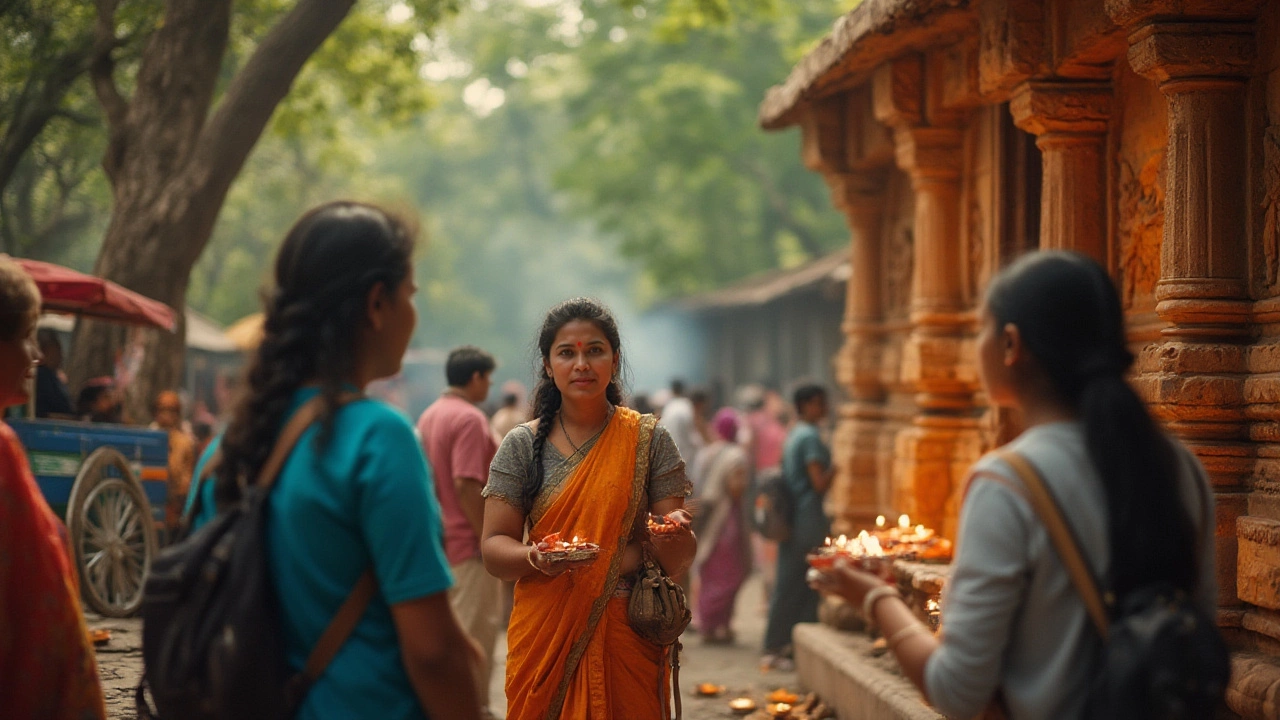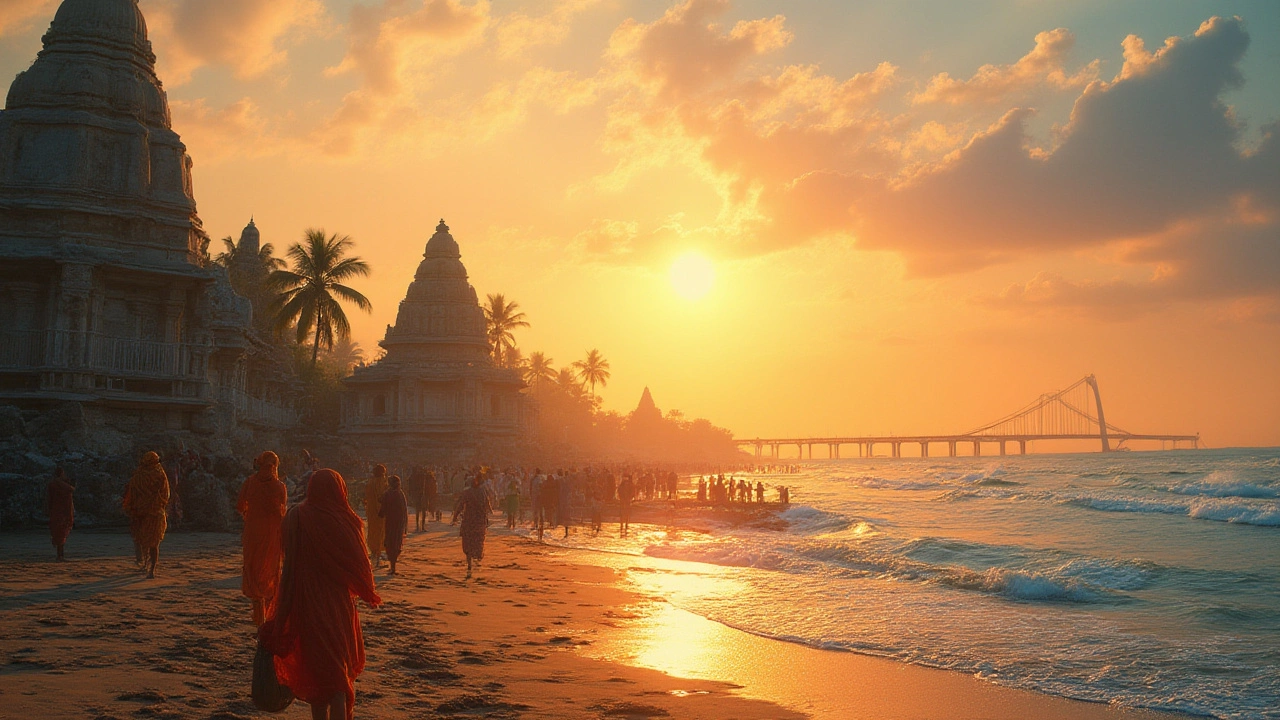You’d be surprised by how a single town can make you reconsider the meaning of time and distance. Rameshwaram isn’t just another pin on India’s spiritual map—it’s a crossroads of myth, sand, and salty wind, draped across the very tip of Tamil Nadu. Most folks, like my son Linus after an hour’s car ride, start asking: “Are we done yet?” Jokes aside, Rameshwaram has this sneaky habit of stretching time. There’s an easy answer (two days), and then there’s the truth—you can rush it in a day or linger for three. But let’s break it down, because if you want to feel the beat of this town and not just tick temples off a list, you’ll need a plan.
What Makes Rameshwaram Unique: Beyond the Usual Temple Run
Let’s be honest. Rameshwaram’s biggest magnet is the Ramanathaswamy Temple, with its endless corridors (actually the longest of any Hindu temple in India) and the rituals echoing back centuries. This site isn’t just old—it’s a living museum, where thousands queue up, not just to see, but to believe. Legend says Lord Rama built a bridge from here to Lanka. The literal stepping stones of history are Dhanushkodi, a ghost town battered by the 1964 cyclone and now just sand, birds, and whispers of the past. It’s eerie, beautiful, and impossible to skip.
But here’s the twist. The town’s rhythm isn’t just spiritual. Water sports on the Gulf of Mannar, old-world markets still hawking shell trinkets, men ferrying fresh fish right off the colourful boats, and the echo of bridal parties hunting for cheap pearls—these are the everyday beats of Rameshwaram. Add in floating stones (yes, rocks that supposedly defy gravity from the Ramayana saga), the mysterious ghost town of Dhanushkodi, sunrise at Agni Theertham Beach, and temples in every shape and era. Locals say there are 22 holy wells in the Ramanathaswamy complex alone—you’ll be splashed from each for spiritual purification (bring a towel and dry clothes, especially if you’re travelling with kids like Linus who think getting drenched is more fun than TikTok).
There’s the Abdul Kalam House too—once home to India’s “Missile Man.” It’s now a compact museum where sketches and medals pack a wallop of inspiration. Kids usually love it. The former president loved the sea, and you can’t go far in Rameshwaram without meeting that endless horizon. By evening, paddle out for some kayaking or just lounge near Ariyaman Beach, where the sand is fine, crowds thin, and the sunset is the kind you’ll want to pocket.

How Many Days for Rameshwaram: Itineraries That Work For Real People
If you try to do Rameshwaram in just one day, you can shoot through the main temple and maybe glimpse Dhanushkodi through your car window. Two days? Now you’ve got wiggle room. Three? You could actually slow down and let the place seep in.
Rameshwaram travel works best on a two-night, three-day rhythm. Here’s what you’ll actually experience each day (and I promise, having done this with an eight-year-old, it works even when bribes of extra ice cream are involved):
- Day 1: Arrive, check in, and set your bags down. Kick things off with the Ramanathaswamy Temple. The corridor walk alone—over 1,200 columns—is the kind of thing that leaves footprints in your memory. Take the ritual bath (kids find it hilarious), then stroll to Agni Theertham Beach for local food like spicy fish fry or freshly shaved coconut. Early evening, visit the bustling local markets for trinket-hunting.
- Day 2: Wake up early and drive down to Dhanushkodi. It’s not “just another beach.” Reeds and ruins, the old train station—nature has gnawed away humanity here, but somehow made it more beautiful. The land fizzles out as you stare at the far blue line of Sri Lanka. Head back, grab an authentic South Indian thali for lunch, then visit Dr. APJ Abdul Kalam’s house and museum for a shot of inspiration. Round off the day at Ariyaman Beach or look for flamingos at the local bird sanctuary.
- Day 3: Now you have choices. Take a boat ride in the morning or go snorkeling near the coral reefs if you’re the adventurous type. Explore some lesser-known temples like Gandhamadhana Parvatham—they boast panoramic Rameshwaram views. Swing by the sea again, grab some spicy street snacks, then pack up.
Each step is doable even if you’re hauling kids or dodging summer heat. For those short on time, two days covers the essentials—temple rituals, the haunted allure of Dhanushkodi, at least one beach, and a whirl through Kalam’s house. But if you linger for three, you can actually let the quiet seep in. Watch locals chant at sunrise, take your time smelling jasmine in the temple courtyards, and maybe stumble upon a festival parade. Yes, there’s a new one every other week in Tamil Nadu. You’ll end up feeling like part of the town rather than a tourist skimming the surface.

Practical Tips to Make Your Rameshwaram Trip Unforgettable
Here’s the stuff that never makes it into glossy brochures but changes your trip. First, weather. Rameshwaram is balmy for most of the year, but the best season for exploring (read: not sweating buckets) is late November to February. Monsoon is unpredictable, but the place turns dramatic—dark skies, roaring waves. I’ve been in July, and it’s hot but doable if you keep an umbrella and extra water handy.
Pack light, with plenty of cotton clothing, and always carry clothes that dry fast. The temple baths, impromptu wave-splashing, sudden rain—something’s always trying to get you wet. Shoes you can slip off easily help, because temple visits mean frequent footwear removal, and there’s a decent amount of walking involved if you’re chasing secret corners and scenic spots.
To avoid peak queues at the Ramanathaswamy Temple, go early (pre-8am) or in the late afternoon. Weekends and new moon days draw thousands of pilgrims, so weekdays give you more space and quiet. If you plan to complete all 22 well baths, mention your intention at the entrance—they’ll guide you towards less crowded sequences. Dhanushkodi road is open from sunrise to about 6pm—don’t get caught after dark, the security will send you back.
Local food is a highlight—don’t miss paruppu payasam, simple dosas, and the coastal fish curry. Even if you don’t speak Tamil, staff and locals are helpful and know the drill with tourists. Bargain in street markets, but remember it’s mostly small business people trying to make an honest living, so keep it fair.
And maybe most important, slow down. This town is built for wandering and wondering, not checklists. Linger under banyan trees draped with prayer flags, watch fishermen mend nets, or hang out near the train station as it hums with arrivals and farewells. Some of my best moments with Linus were simply walking the streets, half-lost and fully alive. If you give Rameshwaram a little more time, maybe three days instead of a rushed day trip, you’ll get something rare: not just sightseeing, but a sense of place that sticks around long after you get home.
